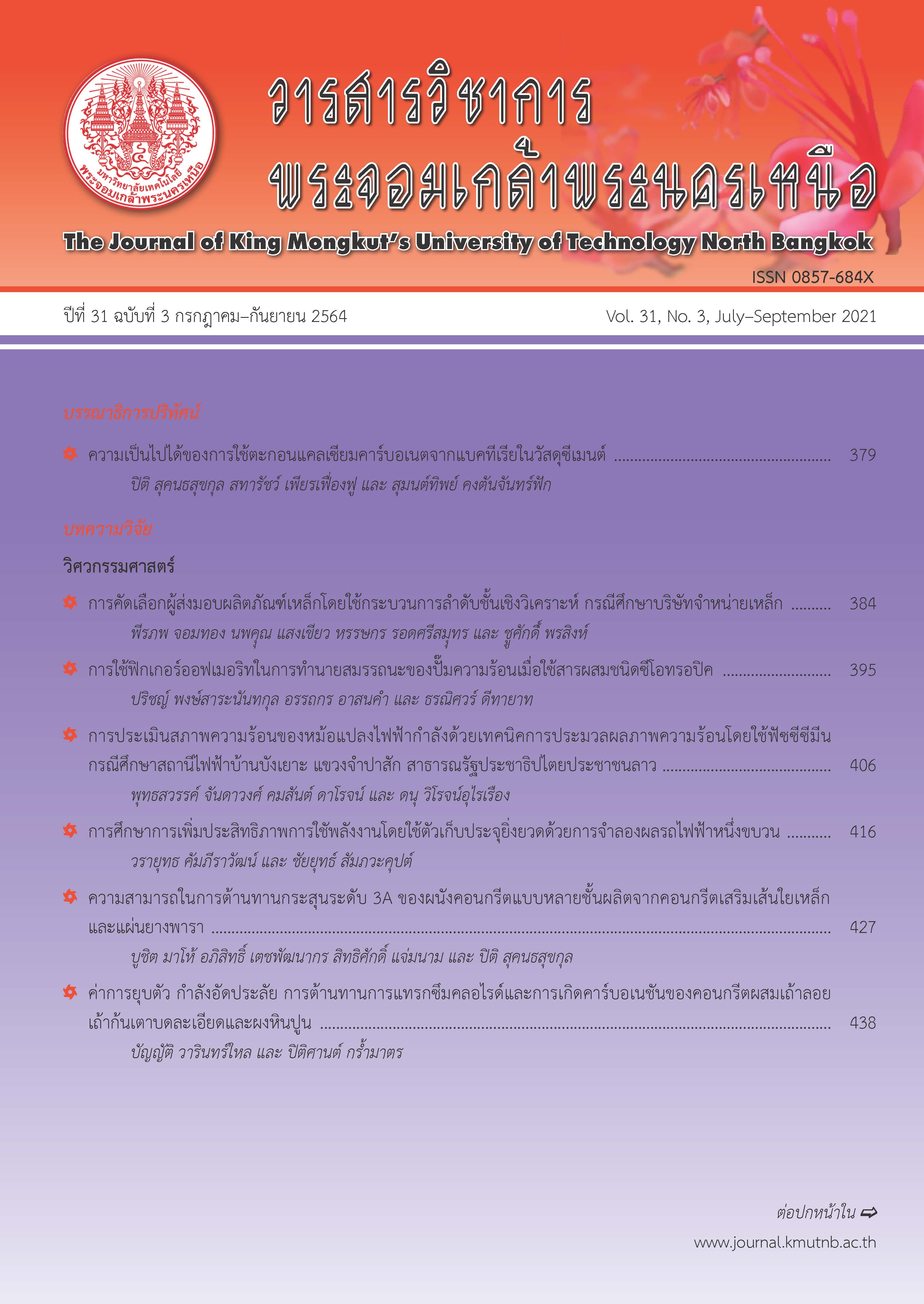Grouping Areas Around Rail Transport Stations Based on the Concept Transit Oriented Development (TOD): The Green Line (Mo Chit–Onnut) and the Blue Line (Bang Sue–Hua Lamphong)
Main Article Content
Abstract
Bangkok and its surrounding provinces have encountered more serious traffic and air pollution problems due to traffic congestion and density of high-rise buildings aspects in urban areas. The area development planning is not consistent with urban space requirements whereas access to railway stations is difficult for all commuters and visitors. Therefore, it is necessary to understand the characteristics of the areas around railway stations. The classification of the metro's station typology covering 500 meters from the centroid of each station constitutes 5 factors i.e. density, diversity, design, distance to transit and destination accessibility. This study applied the statistical calculations program to perform the analysis by using Factor Analysis and Clustering Analysis. With Hierarchical Cluster Analysis method, the calculation of the average distance between all pairs of cases could be used to consider the grouping of the stations from Dendrogram. The classification reveals 4 groups, i.e. Sub CBD, Urban, CBD and Innovation District. This finding could be guidance for area development in accordance with its particular vicinity while occurrences of traffic congestion and air pollution would be alleviated. This contributes to the sustainable development of the environment and activities around urban-suburban rail stations.
Article Details
The articles published are the opinion of the author only. The author is responsible for any legal consequences. That may arise from that article.
References
[2] Maryland Department of Transportation. (2018, December). Transit Oriented Development Task Force. [Online]. Available: http://www.mdot.maryland.gov/newMDOT/Planning/TOD/TOD_Designation_New.html
[3] R. Joshi, J. Yogi, P. Kavina, and D. Vishal. (2019, January). Transit-Oriented Development: Lessons from Indian Experiences. [Online]. Available: https://cept.ac.in/UserFiles/File/CUE/Working
[4] B. Angela. (2019, January). Transit-Oriented Development. [Online]. Available: http://tram.mcgill.ca/Teaching/srp/documents/Brinklow_SRP.pdf
[5] Calthorpe Associates. (2018, December). Transit-oriented development design guidelines. [Online]. Available: https://planning.saccounty.net/PlansandProjectsInProgress/Documents/General%20Plan%202030/GP%20Elements/TOD%20Guide-lines.pdf
[6] G. Lyu, L. Bertolini, and K. Pfeffer, “Developing a TOD typology for Beijing metro station areas,” Journal of Transport Geography, vol. 55, pp. 40–50, 2016.
[7] D. Shinkle. (2018, December). Transit-oriented Development in the States. [Online]. Available: http://www.ncsl.org/documents/transportation/TOD_final.pdf
[8] F. Carl. (2018, November). Walkability of transit-oriented development: Evaluating the pedestrian environment of Metro Vancouver’s Regional City Centres. [Online]. Available: https://qspace.library.queensu.ca/bitstream/handle/1974/7212/Funk_Carl_R_201205_MPL.pdf?sequence=1&isAllowed=y
[9] ITDP. (2018, November). TOD Standard. [Online]. Available:https://www.itdp.in/wpcontent/uploads/2014/04/01.TOD-Standard_Final.pdf
[10] Ontario. (2018, November). Transit-supportive Guidelines. [Online]. Available: http://www.mto.gov.on.ca/english/transit/pdfs/transitsupportive-guidelines.pdf
[11] I. Pawinee and P. Apinya, “Land use and transport integration to promote pedestrian accessibility in the proximity of mass transit stations,” Urban Rail Transit: in Proceeding of the 6th Thailand Rail Academic Symposium of Thailand, 2019, pp. 1–20.

